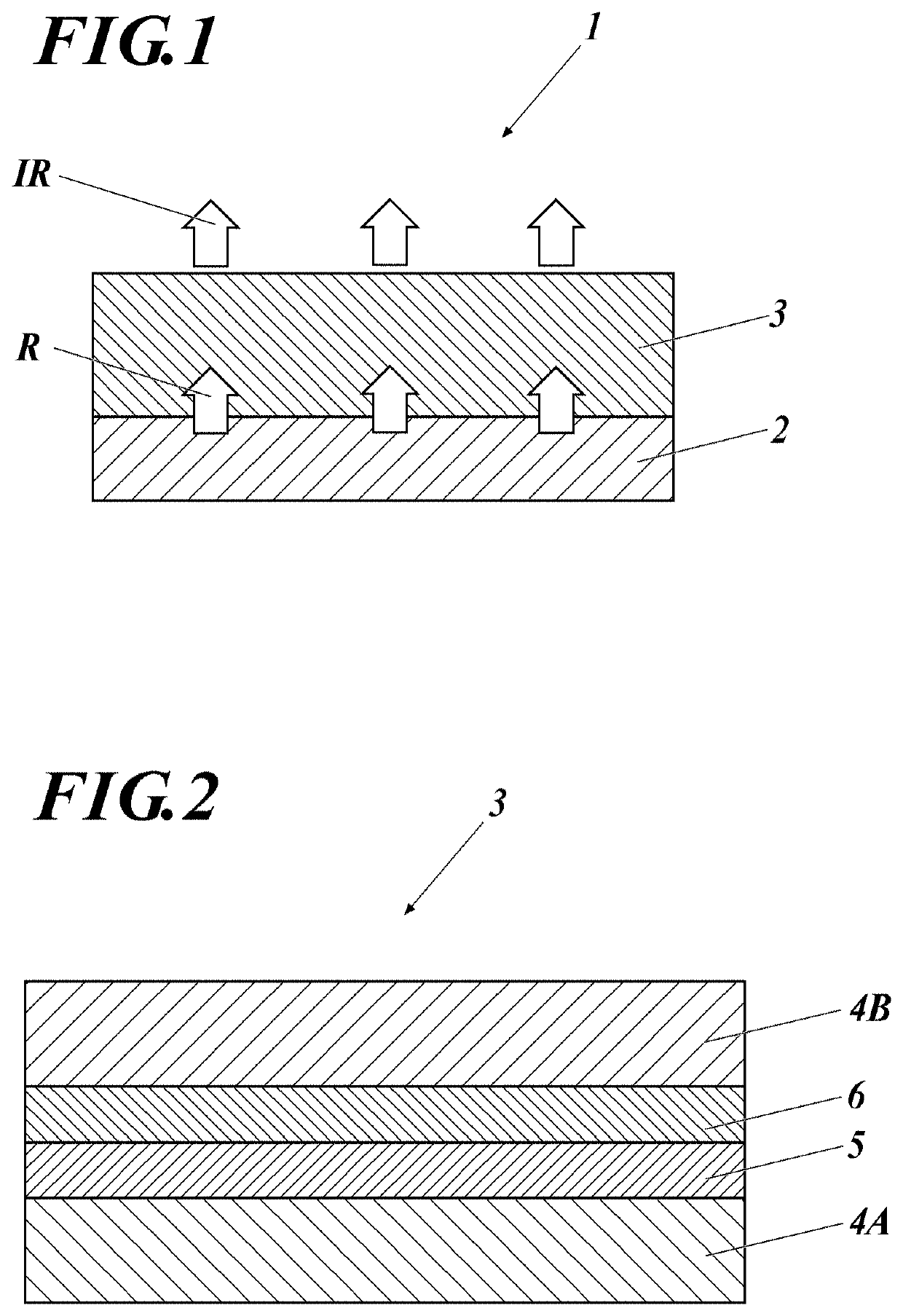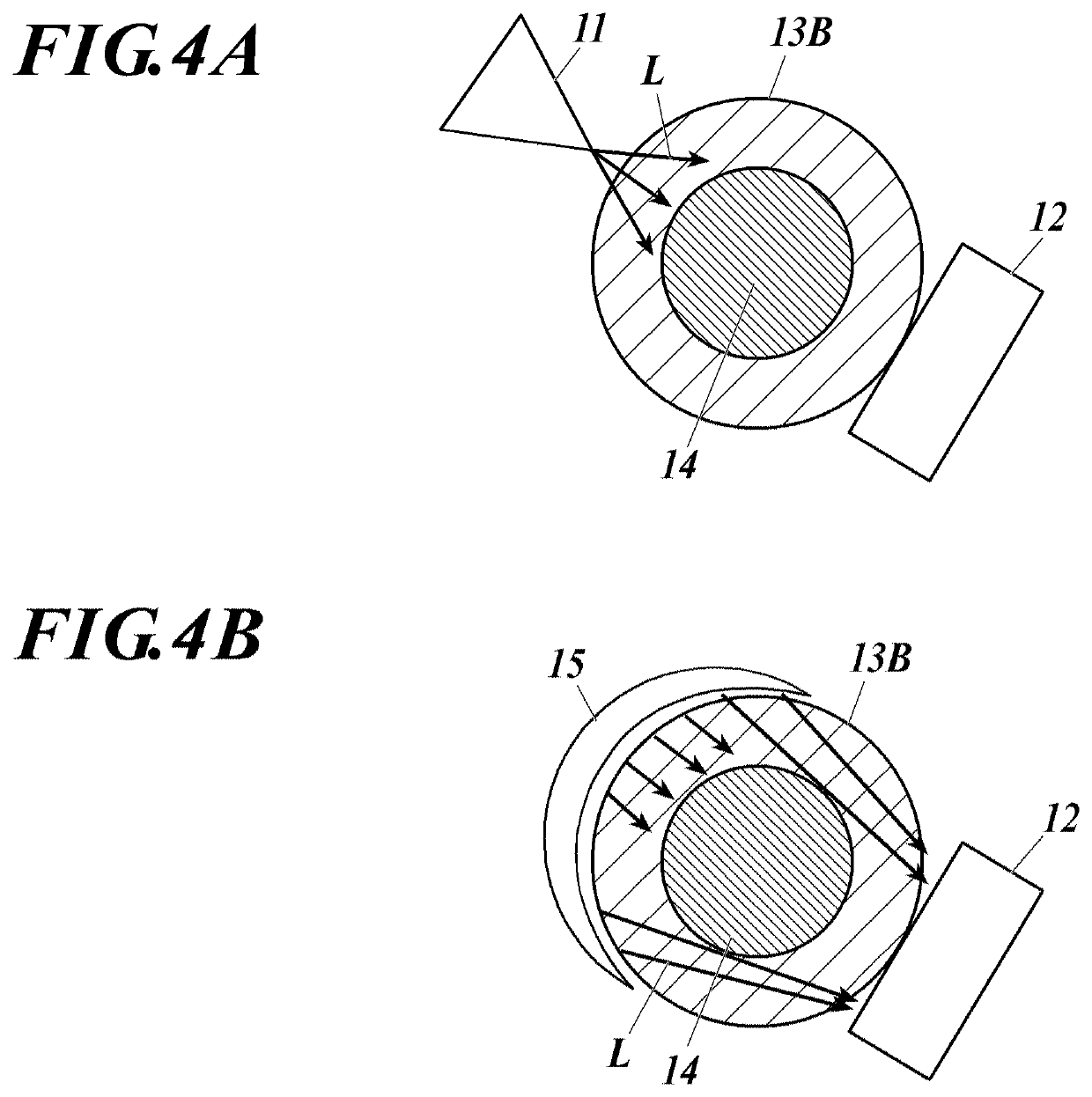Light-emitting member, biological authentication device, wrist-band type electronic apparatus, and biological measurement device
a biometric authentication and light-emitting member technology, applied in the direction of instruments, diagnostic recording/measuring, optical elements, etc., can solve the problems of difficult authentication of fingerprints, unclean hygiene, and inability to use fingerprint authentication methods, etc., to achieve excellent emission intensity and emission life, and reduce the authentication rate. , the effect of shortening the life of the light-emitting member
- Summary
- Abstract
- Description
- Claims
- Application Information
AI Technical Summary
Benefits of technology
Problems solved by technology
Method used
Image
Examples
example 1
>
[Preparation of an Organic EL Element A]
[0127]According to the following procedure, anode / hole injection layer / hole transport layer / light emitting layer / electron transport layer / electron injection layer / cathode are laminated in this order on the substrate and sealed. Thus a bottom emission type organic EL element A was produced.
(Formation of an Anode)
[0128]First, on the entire surface of the side of the polyethylene naphthalate film (manufactured by Teijin DuPont Co., Ltd., hereinafter abbreviated as PEN) that forms an anode, an inorganic gas barrier layer made of SiOx was formed so as to have a thickness of 500 nm by using an atmospheric pressure plasma discharge processing apparatus having the configuration described in JP-A-2004-68143. As a result, a flexible base material (gas barrier film) having a gas barrier property with an oxygen permeability of 0.001 mL / (m2·24 h·atm) or less and a water vapor permeability of 0.001 g / (m2·24 h) or less was prepared.
[0129]Next, ITO (In2O3:Sn...
example 2
[0178](Preparation of a Wristband Type Electronic Device Equipped with Biometric Authentication Device)
[0179]A wristband type electronic device 20 equipped with a biometric authentication function by imaging the wrist vein was produced. As shown in FIG. 6, this electronic device 20 contains an imaging unit 21 composed of a camera and a wide-angle lens placed on the outside of the wrist, and two light emitting members 1-4 prepared in Example 1 provided on a wristband other than on the same plane as the imaging unit when attached.
(Imaging with a Wristband Type Electronic Device Equipped with a Biometric Authentication Device)
[0180]When the wristband type electronic device 20 shown in FIG. 6 was attached on the wrist, it was possible to take an image of a clear vein pattern peculiar to the individual.
example 3
(Preparation of a Biometric Authentication Device Using Vein Imaging of a Fingertip)
[0181]As shown in FIG. 3B, the surface light source 15 and the sensor (imaging unit) 12 were arranged so as to face each other with the finger 13A sandwiched between them, and a device capable of biometric authentication by vein imaging of the fingertip was produced.
(Imaging with a Biometric Authentication Device Using Vein Imaging of a Fingertip)
[0182]By performing vein imaging of a fingertip using the biometric authentication device shown in FIG. 3B, it was possible to take an image of the vein pattern peculiar to the individual.
PUM
| Property | Measurement | Unit |
|---|---|---|
| wavelength range | aaaaa | aaaaa |
| emission wavelength | aaaaa | aaaaa |
| wavelength range | aaaaa | aaaaa |
Abstract
Description
Claims
Application Information
 Login to View More
Login to View More - R&D
- Intellectual Property
- Life Sciences
- Materials
- Tech Scout
- Unparalleled Data Quality
- Higher Quality Content
- 60% Fewer Hallucinations
Browse by: Latest US Patents, China's latest patents, Technical Efficacy Thesaurus, Application Domain, Technology Topic, Popular Technical Reports.
© 2025 PatSnap. All rights reserved.Legal|Privacy policy|Modern Slavery Act Transparency Statement|Sitemap|About US| Contact US: help@patsnap.com



